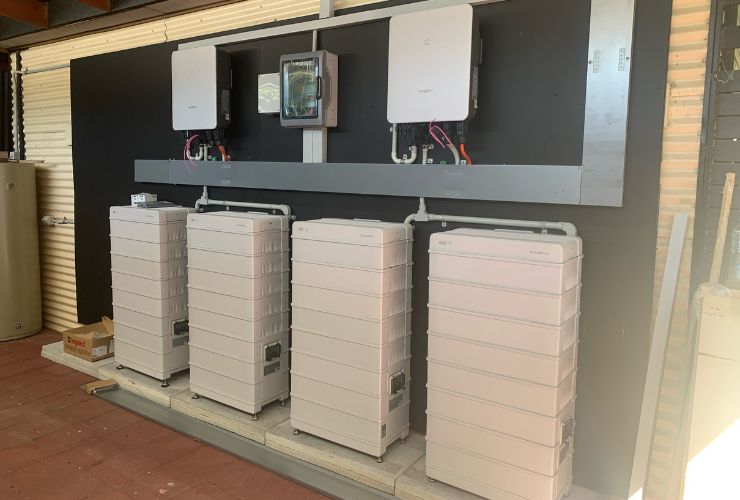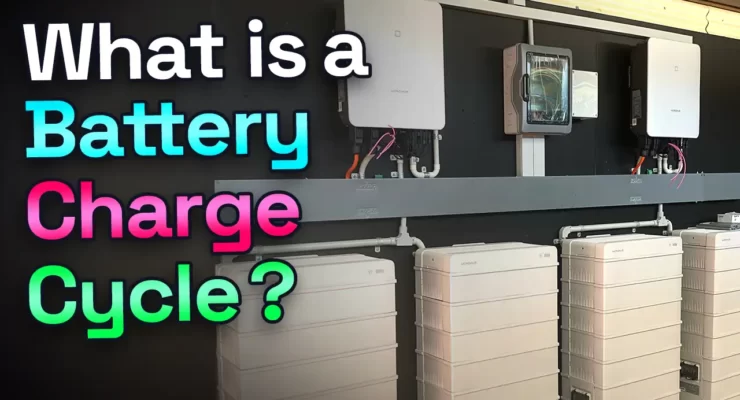Fast read
Understanding charge cycles is crucial for optimising the performance and longevity of lithium-ion batteries, especially in solar systems. A charge cycle refers to the process of fully charging and discharging a battery, impacting its lifespan. Charging your battery only a little bit before recharging can make it last longer. But fully draining the battery when charging can be harder on it.
Manufacturers increasingly use "energy throughput" metrics to gauge battery utility over its warranty period, offering a clearer picture of performance. Factors like temperature, frequency of cycles, and charging practices influence battery lifespan. Despite cycle life warranties, battery performance may degrade over time.
Focusing on energy efficiency and best charging practices is important as the industry changes. This will help make the most of investments in renewable energy products. Also, it will help create a sustainable future.
Understanding Charge Cycles in Solar Storage Batteries
A charge cycle is when you charge up a battery and then use it until it’s empty. This happens a lot, especially in solar systems where batteries get charged and used over and over.
The more charge cycles a battery goes through, the shorter its life becomes. So, it’s crucial to manage charge cycles to make batteries last longer and work better.
Here are some easy things you can do to help:
Don’t let batteries go completely dead often. Instead of fully charging or using up batteries every time, try to charge them a bit and use them partially. This keeps the battery healthier.
Use systems that manage batteries well, especially in solar setups. These can help batteries work better and last longer. If you’re not using batteries for a while, keep them partly charged and at normal temperatures to prevent damage.
By doing these simple things, you can help your batteries last longer and work better. That saves you money and trouble in the long run.
What is a Charge Cycle?
A charge cycle for a lithium-ion battery means using it from full to empty and then charging it back up again. This is how batteries work in things like solar energy setups at home.
For batteries on their own, using up all the battery’s power equals one cycle. You can use a bit today, charge it, then use some more tomorrow, and so on until it adds to one cycle.
Understanding this cycle helps you take care of your battery. These batteries can only handle so many charge cycles before they start wearing out.
So, it’s smart to avoid using up all the battery’s power every time. Instead, try to use it only a little bit before charging it again. This can make your battery last longer and work better over time.
Differentiating Charge Cycles from “Energy Throughput”
Understanding how lithium-ion batteries work involves knowing about full cycles. Manufacturers are also paying more attention to “energy throughput” as an important metric. Charge cycles indicate how often a battery is used.
Energy throughput measures the total electricity the battery can provide within its warranty period. This measurement is typically expressed in kilowatt-hours (kWh) or megawatt-hours (MWh).
The concept of energy throughput provides a clearer picture of a battery’s overall energy utility throughout its lifespan. Rather than simply counting the number of times the battery goes through a full charge and discharge cycle, energy throughput takes into account how much electricity the battery can deliver over its entire operational life.
Manufacturers are leaning towards energy throughput as a preferred metric because it offers a more comprehensive assessment of the battery’s performance and value. Users can see how much energy a battery can provide over its warranty period. This helps them understand the long-term benefits and economic advantages of the battery.
Battery Lifespan and Charging Practices
The lifespan of a lithium-ion battery typically ranges from 300 to 500 full charge cycles. Beyond this threshold, battery performance may start declining. However, factors such as the frequency of charge cycles, battery brand, model, and charging practices can significantly influence this duration.

Shallow vs. Deep Charging
Shallow charging partially discharges the battery before recharging, whereas deep charging completely depletes the battery before recharging. This form of charging tends to be less stressful for the battery and can contribute to extending its lifespan.
Extending Battery Life
To prolong a battery’s lifespan, it’s advisable to:
- Utilise shallow charging: Opt to use only 20-30% of the battery’s capacity before recharging, significantly enhancing its longevity.
- Maintain optimal charging temperatures: Avoid subjecting the battery to extremely high temperatures while charging, which can lead to short circuits and compromise battery stability.
Understanding Cycle Life Warranty
A cycle life warranty typically guarantees the battery’s performance up to a specified number of cycles. However, it’s important to note that as the battery ages, its energy usage capacity will gradually decrease. Therefore, while a battery may have a warranty for several cycles, its performance may not remain consistent throughout this period.
Evolving Perspectives on Battery Metrics
The battery industry is gradually shifting towards performance warranties based on “energy throughput” rather than “cycle life.” Energy throughput is a better measure of a battery’s performance over time. It considers factors like degradation and incomplete charge cycles. This measurement shows how much electricity a battery can provide during its warranty period.
Maximising Battery Investments for a Sustainable Future
Knowing how well batteries work is important for getting the most out of solar power and renewable energy systems. Lithium-ion batteries are getting better at lasting longer and charging faster. Consulting with local experts can provide valuable insights into optimising battery performance and contributing to a sustainable energy future.
Understanding battery lifespan is important. The industry is now focusing more on energy throughput. This helps to get a better idea of battery performance over time. By implementing optimal charging practices and staying informed about evolving battery technologies, users can make informed decisions to maximise their renewable energy investments.
